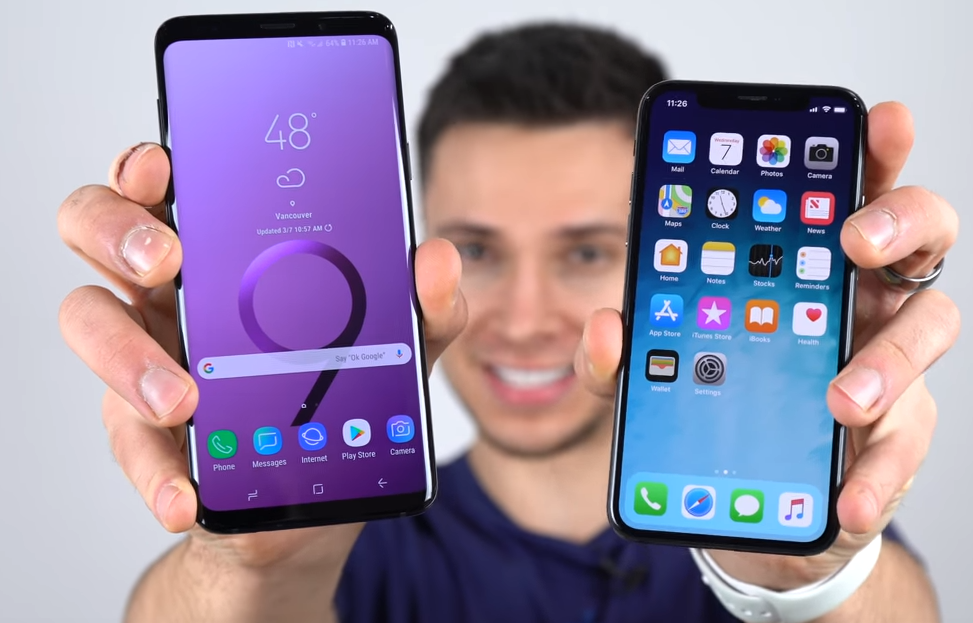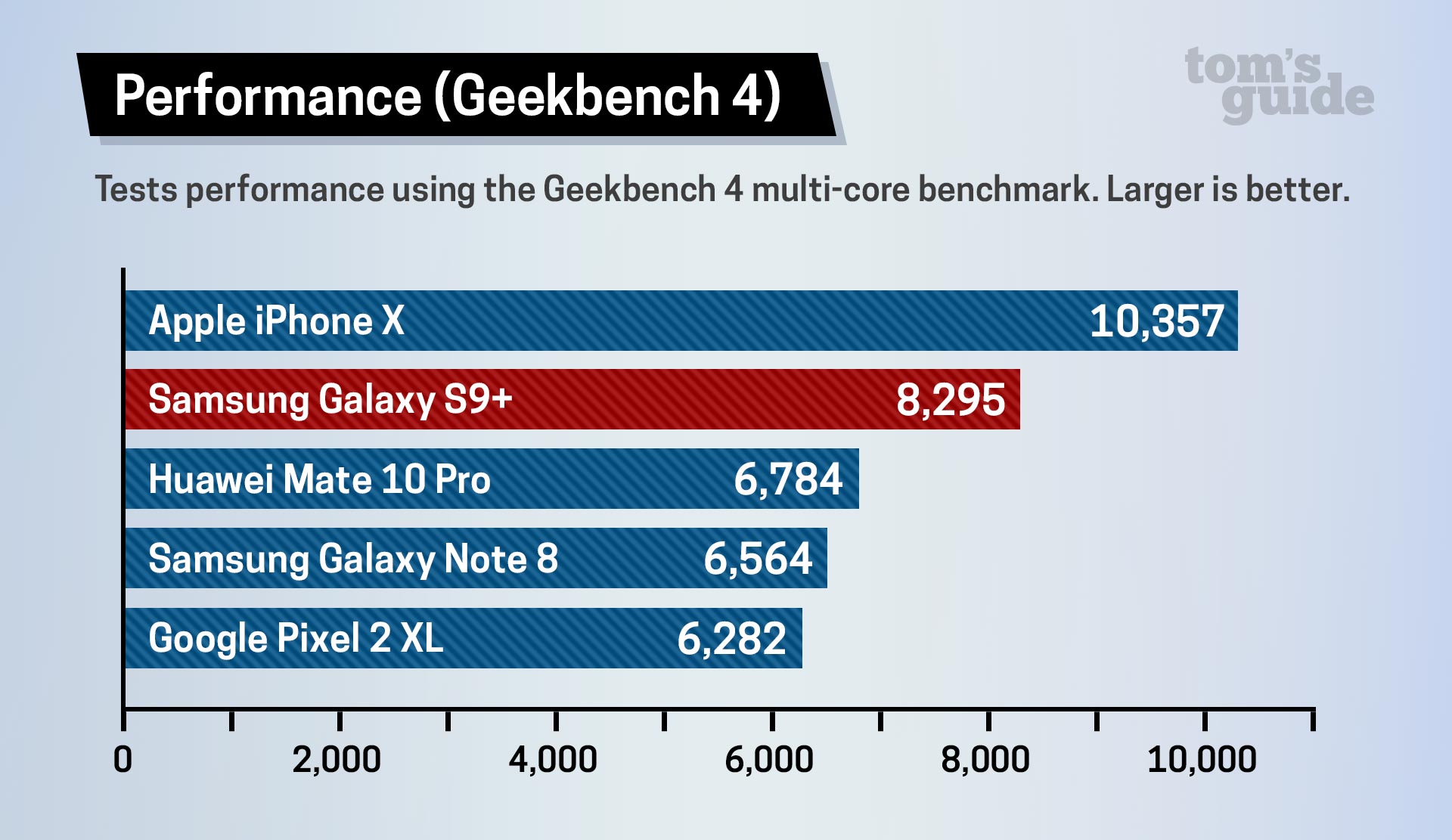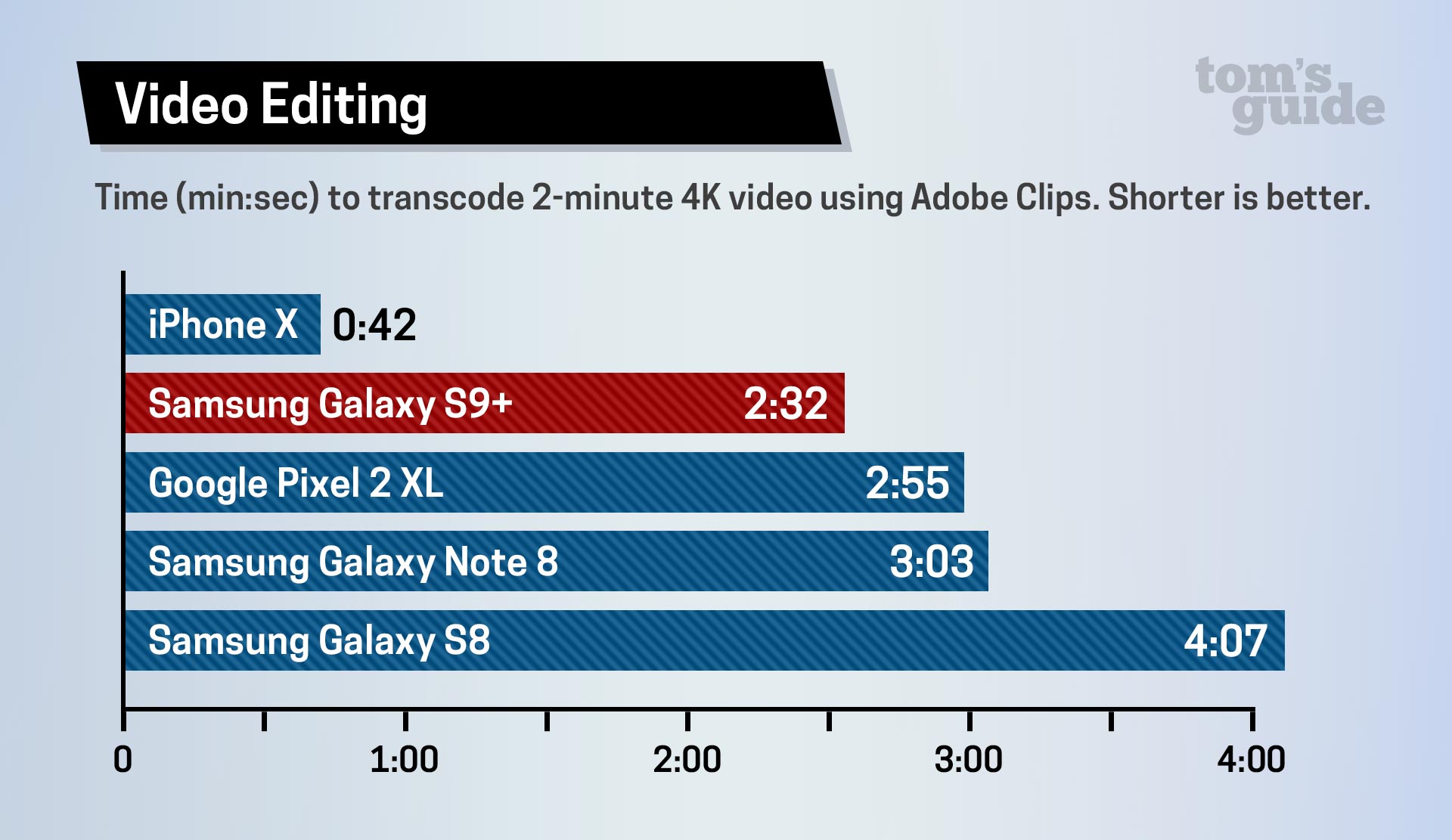 6855
6855
 2018-03-12
2018-03-12
The Galaxy S9 boasts a faster new processor, redesigned camera and a host of other new features that Samsung hopes vaults its latest product to the top of the smartphone heap. Run down the specs for the S9, and there's no denying that Samsung has built an formidable phone that's likely to top last year's model, which was a pretty impressive device in its own right.

Forgive Apple's iPhone X, though, if it's not exactly shaking in its boots. For all the enhancments and new additions the Galaxy S9 brings to the table, Apple's flagship phone looks like it still has the edge in half-a-dozen key areas, especially now that we've had a chance to test the Galaxy S9+. Samsung's latest may be the phone to beat on the Android side of the market, but there's plenty of reasons why the iPhone X remains the gold standard in the smartphone world even with the arrival of the Galaxy S9.
The A11 Bionic Is Still the Speed King
Every new generation of flagship introduces a faster mobile processor. And while the Snapdragon 845 inside the Galaxy S9 improves upon the performance we saw from last year's Snapdragon 835-powered Android flagships, the faster processor didn't unseat Apple's A11 Bionic CPU in several of our tests.
In the Geekbench 4 general performance test, we recorded a score of 8,295 for the Galaxy S9+. That's better than any Android phone we've ever tested. And it's still not within shouting distance of the iPhone X's 10,357 score.


You want real-world results? We use Adobe Premiere Clip to convert a 2-minute 4K video to 1080p. The iPhone X blazes through that task in 42 seconds. The S9+ improved upon the S8's time, but it still needs 2 minutes, 32 seconds to finish the job.
While our testing found that the Snapdragon 845 inside the Galaxy S9+ outperforms the iPhone is at least one graphics benchmark, overall the A11 Bionic remains the speed king. And since it happens to power the iPhone 8 and iPhone 8 Plus in addition to the iPhone X, Apple can boast a formidable threesome of phones.
Animoji Beats AR Emoji
Animoji — those animated 3D emoji that mimic your facial expressions introduced with the iPhone X — are polished and engaging. AR Emoji, Samsung's answer to Animoji on the Galaxy S9, are... less so. While Samsung deserves credit for putting its own spin on the emoji craze, the execution leaves something to be desired. Your S9-created avatar doesn't really look like you, customization options are limited, and the videos created by AR Emoji are as likely to confuse as they will amuse, as your facial gestures simply don’t look as natural.
Face ID
I was a bit of a Face ID skeptic when Apple introduced the feature in the iPhone X. "No fingerprint reader? Are you mad?" I may have muttered in front of confused onlookers. But as turns out, Face ID is pretty slick once you get used to it. It's also secure enough to be used to confirm mobile payments, thanks to that TrueDepth imaging system on the front of the iPhone X. The Galaxy S9's Intelligent Scan is a step in the right direction — it combines iris scanning with face recognition so that one of those methods will unlock your phone should the other one fail — but it's not nearly as secure or seamless as what the iPhone X can pull off.
The iPhone's OLED Panel Is Tough to Beat
When the iPhone X came out last fall, we found its display to offer the best OLED experience. Stacked up against leading Android phones with OLED panels, the iPhone X proved to be brighter, offer better white balance and viewing angles and render more natural-looking colors than the competition, including phones from Samsung. We're not sure if that verdict stung Samsung, but the company made a point of boosting the brightness on the Galaxy S9. At 482 nits, the S9+ is certainly brighter than last year's Samsung phone, but the iPhone X is still brighter at 574 nits in our testing. At least Samsung can claim a moral victory since it supplies Apple with OLED screens.
Siri's Still Better Than Bixby
I'm not going to pretend Siri is flawless, as anyone who's ever watched me engage in a one-way argument with Apple's virtual assistant will confirm. I certainly wish Siri worked with more third-party apps and that it could tap into as deep a knowledge base as Google Assistant does. But one area where Siri does excel is working with your iPhone — setting timers, dictating texts, creating reminders — when you'd rather not use your hands. Bixby, Samsung's on-board assistant, can't say the same. And even with the improvements to Bixby in the Galaxy S9 — its ability to provide real-time translation when you point the phone's camera at text is a nice addition — Samsung's assistant still feels like an "us, too" addition. If I need an assistant to help me try on makeup, I guess I'll turn to Bixby Vision; for everything else, Siri still outpaces Bixby.
An Edge in Apps
Google Play has long since surpassed the App Store when it comes to the number of apps available to download. But it's never really closed the quality gap. The best apps tend to land on the iOS platform first and — in some cases — stay there exclusively. Recent iOS-first apps include everything from great games like Alto’s Odyssey, the powerful email client Airmail, and the flexible Bear note-taking app. Even more impressive for the iPhone X is the growing number of developers who've retooled their apps specifically to account for the new design of Apple's phone.
Better Front Camera
The TrueDepth camera on the front of the iPhone X doesn’t just produce better looking Animoji. It also allows you to snap compelling portraits that blur out the background. Or, if you use Apple’s Portrait Lighting effects, you can remove the background compeltely. The Galaxy S9+ can pull off portraits with a bokeh effect using its dual rear cameras, but neither the S9 or S9+ can do portraits with their front shooters despite the many impressive changes Samsung introduced to the cameras on its new phones.
OS Updates Like Clockwork
Good news, if you get a Galaxy S9: You’ll have Android Oreo, the latest version of Google’s mobile OS. That’s more than people who bought last year’s Galaxy S8 can say, as Samsung and the assorted wireless carriers are still in the process of rolling out that update, even though Oreo made its debut last August. Contrast that with Apple’s approach to iOS updates, where it’s available to every iPhone at once. iPhone X users can rest easy, knowing that when there’s an important security update, bug fix or feature add, they'll get it right away.